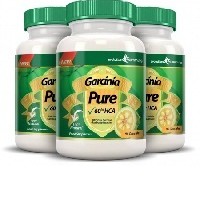Shopping and the Food Glycemic Index
The food glycemic index enables users to look at almost any food and instantly see a number that will tell them how much that food will impact their blood sugar levels. Obviously, this tool takes out much of the guesswork involved in the process and has no doubt saved lives.
One of the major ways that the index has impacted individuals is that it has changed the way that users shop for food. Armed with the GI, users can make safer and smarter choices built around the knowledge of how much their blood sugar levels will be changed by a given food.
Shopping can still be tricky, of course. But with the food glycemic index, choices can be a bit less murky. However, without a photographic memory or a copy of the GI in hand, there are still some general rules that can be followed to help shoppers may better food buying decisions.
The easiest way to shop for low GI foods is to stick with as many fruits and vegetables as possible. This may seem like an obvious point, but it bears repeating. If one studies the index for even a moment, it quickly becomes obvious that the superstars of the index are fruits and vegetables. As a result, one of the easiest moves someone looking to eat on the low side of the food glycemic index can make is to keep the bulk of their shopping in the fruit and vegetable category.
By opting for fruits and vegetables, one naturally reduces one's reliance on processed food and the sugar and white flour it often contains. Food based on white flour should be avoided; other picks such as rye and oatmeal are far better choices. By selecting breads and other carbohydrates that are lower on the food glycemic index, one can take a massive step toward avoid many of the high GI foods.
Sugar is obviously a high GI food and avoiding it should be your priority. One clear way of doing this is to pass on the soda and sugary packaged drinks. A good alternative is to make your own juice with a juicer at home. Fruits and vegetables are low on the food glycemic index. By juicing at home, you will know that no sugar has been added to your juice. While this may be time consuming, consider juicing enough juice for the entire week. Of course, this does mean buying enough fresh fruits and vegetables while at the store. There are lots of great juicing recipes so you should never feel limited.
With a little planning, a good cookbook and a juicer you can reduce the amount of foods you eat that are high on the food glycemic index. Shopping is where the entire process begins. With a little forethought, you can shape your meals and your diet in advance.
Related Articles
-
The New Advanced Natural Fat Burner Dietary Supplement - Perfect Energy
So, youve made the decision that its time to get your diet and wor
-
Fat Burning Furnace - Easy Quick Workouts That Outperform Most Exercises!
Learn How to Lose 26 Pounds in 7 Weeks! Easy Quick Workouts That Outpe
-
Xenical act as an inhibiting the absorption of dietary fats
XENICAL (orlistat) is a gastrointestinal lipase inhibitor for obesity
-
Master Cleanser Diet Recipe
<!-- /* Font Definitions */ @font-face font-family:Wingdings; panos
-
The Public Stoning of Gastric Bypass Patients: When Things Get Ugly
Recently a woman went public in her online diet comm
-
Does Evercleanse ever cleanse?
Does Evercleanse ever cleanse? Evercleanse seems to be a mystery weig
- DON'T MISS
- Can Fatty Acids Actually Enable You To Lose Weight
- Include Good Eating Habits In Your Diet
- Get Rid of Sagging, Jiggling, and Flabby Arms, 4 Surefire Ways
- Advice And Information To Help You To Lose Weight
- THE DIET SOLUTION PROGRAM - BEST FOODS FOR WEIGHT LOSS
- Fat Burning Exercises - 4 Ways to Tone Up Fast
- Fat Burning Furnace - Have More Free Time By Dropping Your Cardio Workouts and Using Short Burst Exercising!
- Fat Burning Furnace Truth
- Tools For Your Weight Loss Arsenal
- HCG for Weight Loss: Makeover Your Kitchen for Success




